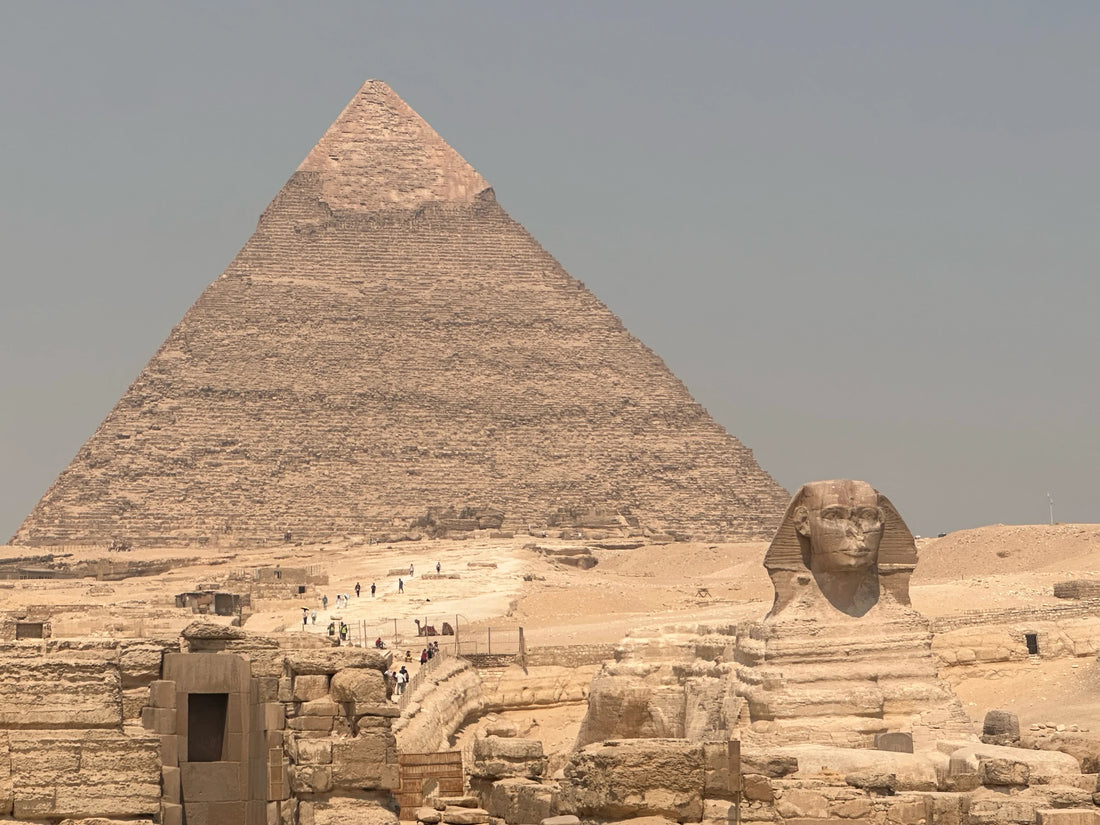
Unveiling the Mysteries of the Pyramids: Facts and Legends
Kobra ReisenThe Pyramids of Giza are among the most iconic and enduring symbols of ancient Egypt, drawing millions of visitors each year. These majestic structures, with their timeless allure, have captivated the imagination of people worldwide for centuries. In this blog post, we delve into some fascinating facts and enduring legends surrounding these ancient wonders, offering a deeper understanding of their significance and mystery.

1. The Great Pyramid of Giza
The Great Pyramid of Giza, also known as the Pyramid of Khufu, is the largest of the three pyramids and one of the Seven Wonders of the Ancient World. Built around 2580–2560 BC, it was originally covered with smooth white limestone casing stones that reflected the sun’s rays, earning it the name "Ikhet," meaning "Glorious Light." Today, it stands as a testament to the architectural and engineering prowess of the ancient Egyptians.
- Fact: The Great Pyramid was the tallest man-made structure in the world for over 3,800 years, standing at an original height of 146.6 meters (481 feet).

2. The Pyramid of Khafre and the Sphinx
The Pyramid of Khafre, built for the pharaoh Khafre, is the second tallest and second largest of the pyramids at Giza. It is easily recognizable by its remaining casing stones at the top. In front of this pyramid lies the Great Sphinx, a colossal limestone statue with the body of a lion and the head of a pharaoh, believed to represent Khafre.
- Legend: The Sphinx is shrouded in mystery, with numerous legends about its origins and purpose. One popular legend suggests that the Sphinx guards a secret underground library, known as the Hall of Records, containing ancient knowledge.
3. The Pyramid of Menkaure
The smallest of the three, the Pyramid of Menkaure is notable for its complex of subsidiary pyramids and the remains of an intricate mortuary temple. Despite its smaller size, the pyramid and its associated structures offer valuable insights into the evolution of pyramid construction and religious practices.
- Fact: Recent archaeological discoveries suggest that the pyramids were built by a well-organized workforce of skilled laborers rather than slaves, as often depicted in popular culture.

4. The Mystery of Pyramid Construction
The construction techniques used to build the pyramids have been the subject of debate and wonder for centuries. Various theories have been proposed, ranging from ramps and cranes to more exotic ideas involving lost technologies or extraterrestrial assistance. However, most experts agree that the ancient Egyptians used a combination of skilled labor, simple tools, and a deep understanding of geometry and engineering.
- Legend: One legend tells of a magical "Stone of Light," used by the builders to lift and position the massive stones effortlessly. This stone, however, remains a part of ancient lore and has never been found.
5. Astronomical Alignments and Mystical Properties
The precise alignment of the pyramids with celestial bodies has led to speculation about their purpose and function. Some theories suggest that the pyramids were designed to serve as astronomical observatories or to align with specific stars for religious or ceremonial reasons.
- Fact: The Great Pyramid is aligned almost perfectly with the cardinal points of the compass, a feat that reflects the advanced understanding of astronomy and mathematics in ancient Egypt.
Conclusion
The Pyramids of Giza continue to fascinate and intrigue scholars and visitors alike. Their construction, purpose, and the sheer scale of these monumental structures offer a window into the grandeur and complexity of ancient Egyptian civilization. While much has been learned, the pyramids still hold many secrets, fueling the imagination and inspiring countless stories and legends.
